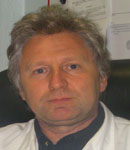Studying at the University of Verona
Here you can find information on the organisational aspects of the Programme, lecture timetables, learning activities and useful contact details for your time at the University, from enrolment to graduation.
Academic calendar
The academic calendar shows the deadlines and scheduled events that are relevant to students, teaching and technical-administrative staff of the University. Public holidays and University closures are also indicated. The academic year normally begins on 1 October each year and ends on 30 September of the following year.
Course calendar
The Academic Calendar sets out the degree programme lecture and exam timetables, as well as the relevant university closure dates..
| Period | From | To |
|---|---|---|
| INF VI - 1° anno 1° sem | Oct 1, 2019 | Dec 20, 2019 |
| INF VI - 2° anno 1° sem | Oct 1, 2019 | Dec 20, 2019 |
| INF VI - 3° anno 1° sem | Oct 14, 2019 | Dec 20, 2019 |
| INF VI - 3° anno 2° sem | Feb 3, 2020 | Mar 27, 2020 |
| INF VI - 1° anno 2° sem | Feb 3, 2020 | Apr 3, 2020 |
| INF VI - 2° anno 2° sem | Apr 27, 2020 | Jun 26, 2020 |
| Session | From | To |
|---|---|---|
| INF VI - sessione invernale | Jan 7, 2020 | Jan 29, 2020 |
| INF VI - sessione estiva (3° anno 1^ parte) | Mar 30, 2020 | Apr 16, 2020 |
| INF VI - sessione estiva (1° anno 1^ parte) | Apr 6, 2020 | Apr 23, 2020 |
| INF VI - sessione estiva (2° anno) | Jul 6, 2020 | Jul 31, 2020 |
| INF VI - sessione estiva (1° anno 2^ parte) | Jul 13, 2020 | Jul 31, 2020 |
| INF VI - sessione estiva (3° anno 2^ parte) | Jul 20, 2020 | Jul 31, 2020 |
| INF VI - sessione autunnale | Sep 1, 2020 | Sep 25, 2020 |
| Session | From | To |
|---|---|---|
| 1^ SESSIONE | Oct 1, 2020 | Nov 30, 2020 |
| 2^ SESSIONE | Mar 1, 2021 | Apr 30, 2021 |
| Period | From | To |
|---|---|---|
| FESTIVITA' OGNISSANTI | Nov 1, 2019 | Nov 1, 2019 |
| FESTIVITA' IMMACOLATA CONCEZIONE | Dec 8, 2019 | Dec 8, 2019 |
| Vacanze di Natale | Dec 24, 2019 | Jan 6, 2020 |
| VACANZE DI PASQUA | Apr 10, 2020 | Apr 15, 2020 |
| FESTA DELLA LIBERAZIONE | Apr 25, 2020 | Apr 25, 2020 |
| FESTIVITA' DEL LAVORO | May 1, 2020 | May 1, 2020 |
| FESTA DELLA REPUBBLICA | Jun 2, 2020 | Jun 2, 2020 |
| Description | Period | From | To |
|---|---|---|---|
| INF VI - tirocinio 2° anno 1^ esp | INF VI - tirocinio 2° anno 1^ esp | Feb 3, 2020 | Mar 6, 2020 |
| INF VI - tirocinio 2° anno 2^ esp | INF VI - tirocinio 2° anno 2^ esp | Mar 16, 2020 | Apr 24, 2020 |
| INF VI - tirocinio 3° anno 1^ esp | INF VI - tirocinio 3° anno 1^ esp | Apr 17, 2020 | May 29, 2020 |
| INF VI - tirocinio 1° anno 1^ esp | INF VI - tirocinio 1° anno 1^ esp | Apr 27, 2020 | May 29, 2020 |
| INF VI - tirocinio 3° anno 2^ esp | INF VI - tirocinio 3° anno 2^ esp | Jun 8, 2020 | Jul 17, 2020 |
| INF VI - tirocinio 1° anno 2^ esp | INF VI - tirocinio 1° anno 2^ esp | Jun 8, 2020 | Jul 10, 2020 |
| INF VI - tirocinio 2° anno 3^ esp | INF VI - tirocinio 2° anno 3^ esp | Sep 1, 2020 | Oct 2, 2020 |
| INF VI - tirocinio 3° anno 3^ esp | INF VI - tirocinio 3° anno 3^ esp | Sep 1, 2020 | Oct 9, 2020 |
Exam calendar
Exam dates and rounds are managed by the relevant Medicine Teaching and Student Services Unit.
To view all the exam sessions available, please use the Exam dashboard on ESSE3.
If you forgot your login details or have problems logging in, please contact the relevant IT HelpDesk, or check the login details recovery web page.
Should you have any doubts or questions, please check the Enrollment FAQs
Academic staff
 maribedin@libero.it
maribedin@libero.it
 michele.bertani@univr.it
michele.bertani@univr.it
Cunico Laura
 laura.cunico@univr.it
laura.cunico@univr.it
 chiara.gnata@libero.it
chiara.gnata@libero.it
 jessica.longhini@univr.it
jessica.longhini@univr.it
 massimo.manfridi@univr.it
massimo.manfridi@univr.it
 loredana.pancheri@univr.it
loredana.pancheri@univr.it
 rafaella.visona@univr.it
rafaella.visona@univr.it
Study Plan
The Study Plan includes all modules, teaching and learning activities that each student will need to undertake during their time at the University.
Please select your Study Plan based on your enrollment year.
1° Year
| Modules | Credits | TAF | SSD |
|---|
Professional Laboratories (1st year)
2° Year activated in the A.Y. 2020/2021
| Modules | Credits | TAF | SSD |
|---|
Professional Laboratories (2nd year)
3° Year activated in the A.Y. 2021/2022
| Modules | Credits | TAF | SSD |
|---|
Professional Laboratories (3rd year)
| Modules | Credits | TAF | SSD |
|---|
Professional Laboratories (1st year)
| Modules | Credits | TAF | SSD |
|---|
Professional Laboratories (2nd year)
| Modules | Credits | TAF | SSD |
|---|
Professional Laboratories (3rd year)
Legend | Type of training activity (TTA)
TAF (Type of Educational Activity) All courses and activities are classified into different types of educational activities, indicated by a letter.
Health and safety promotion - METODOLOGIA EPIDEMIOLOGICA, IGIENE E PROBLEMI PRIORITARI DI SALUTE (2019/2020)
Teaching code
4S000035
Teacher
Credits
2
Language
Italian
Scientific Disciplinary Sector (SSD)
MED/42 - HYGIENE AND PUBLIC HEALTH
Period
INF VI - 1° anno 2° sem dal Feb 3, 2020 al Apr 3, 2020.
Location
VICENZA
To show the organization of the course that includes this module, follow this link: Course organization
Learning outcomes
The course introduces the student to the understanding of the determinants of health, risk factors, prevention strategies both individual and collective, and of interventions to promote the health and safety of their users. It also aims to understand the causes, the pathogenic mechanisms, and methods of prevention and control of infectious diseases.
Program
1. Introduction to Epidemiology: definition, objectives and epidemiology characteristics, measures in epidemiology
2. The concept of health, disease and causes of disease epidemiology. Criteria for assessing the causal link
3. Epidemiological studies: descriptive, analytical, experimental
4. Elements for the evaluation of the main population health problems: major diseases in the general population, leading causes of death in the general population
5. Epidemiology and prevention of infectious diseases: epidemiological chain and the methods of transmission (endemic, sporadic, epidemic diseases), the direct and indirect prophylaxis of infectious diseases, the specific prophylaxis (vaccine prophylaxis, basic knowledge of serum prophylaxis and chemoprophylaxis
6. Epidemiology and primary and secondary prevention of major chronic diseases: ischemic heart disease, diabetes, COPD, malignancies
7. screening tests
| Author | Title | Publishing house | Year | ISBN | Notes |
|---|---|---|---|---|---|
| Cesare Meloni | Igiene per le lauree delle professioni sanitarie | Casa Editrice Abrosiana | 2009 | ||
| Ricciardi-Angelillo-Brusaferro-De Giusti-De Vito-Moscato-Pavia-Siliquini-Villari | Igiene per le professioni sanitarie (Edizione 1) | Idelson-Gnocchi | 2015 | 978-88-7947-590-7 | |
| Saiani Luisa-Brugnolli Anna | Trattato di cure infermieristiche (Edizione 2) | Idelson-Gnocchi | 2013 | 8879475762 |
Examination Methods
The final test is a written exam with multiple choice questions.
The aim of the test is to verify the knowledge of all the topics discussed.
The final evaluation is expressed in thirtieths.
Career prospects
Module/Programme news
News for students
There you will find information, resources and services useful during your time at the University (Student’s exam record, your study plan on ESSE3, Distance Learning courses, university email account, office forms, administrative procedures, etc.). You can log into MyUnivr with your GIA login details: only in this way will you be able to receive notification of all the notices from your teachers and your secretariat via email and soon also via the Univr app.
Gestione carriere
Orario lezioni
Si invitano gli studenti a prendere visione dei possibili aggiornamenti.
Indicazioni per l'iscrizione alla pagina moodle degli insegnamenti per il 1° anno
Si pubblica la programmazione annuale dell'attività didattica e tirocinio per l'anno accademico 2023-2024
AGGIORNAMENTO 25 MARZO 2024 Calendario lezioni 1°A. 2° semestre A.A. 2023/2024
AGGIORNAMENTO 15 APRILE 2024 Calendario lezioni 3° anno 2° semestre A.A 2023/2024
Documents
| Title | Info File |
|---|---|
|
|
pdf, it, 70 KB, 15/04/24 |
|
|
pdf, it, 49 KB, 25/03/24 |
|
|
pdf, it, 528 KB, 13/07/23 |
|
|
pdf, it, 8849 KB, 13/10/22 |
Guida ai programmi degli insegnamenti
Guida ai programmi degli insegnamenti
Documents
| Title | Info File |
|---|---|
|
|
pdf, it, 1594 KB, 12/12/22 |
|
|
pdf, it, 1310 KB, 02/09/21 |
Graduation
Documents
| Title | Info File |
|---|---|
|
|
pdf, it, 242 KB, 19/01/24 |
|
|
pdf, it, 80 KB, 06/04/24 |
|
|
pdf, it, 43 KB, 06/04/24 |
|
|
pdf, it, 44 KB, 09/04/24 |
|
|
pdf, it, 148 KB, 06/04/24 |
|
|
pdf, it, 108 KB, 06/04/24 |
|
|
pdf, it, 115 KB, 06/04/24 |
|
|
pdf, it, 1487 KB, 18/02/22 |
|
|
pdf, it, 437 KB, 22/03/24 |
|
|
pdf, it, 957 KB, 22/03/24 |
|
|
pdf, it, 424 KB, 19/01/24 |
Linee guida per riconoscimento cfu
Lo studente che intende chiedere il riconoscimento di moduli o insegnamenti pregressi dovrà presentare domanda, entro il 30 novembre dell’anno accademico in corso, seguendo le indicazioni indicate al link seguente: https://www.univr.it/it/i-nostri-servizi/segreterie-studenti/gestione-carriere-studenti-medicina-e-chirurgia/riconoscimento-crediti-acquisiti-da-una-carriera-pregressa-medicina
Documents
| Title | Info File |
|---|---|
|
|
pdf, it, 295 KB, 09/11/21 |
Appelli d'esame
AGGIORNAMENTO 11 MARZO calendario appelli d'esame di APRILE 2024 per il 1° Anno
AGGIORNAMENTO 4 MARZO calendario appelli d'esame di MAGGIO 2024 per il 3° Anno
Documents
| Title | Info File |
|---|---|
|
|
pdf, it, 190 KB, 11/03/24 |
|
|
pdf, it, 194 KB, 04/03/24 |
|
|
pdf, it, 196 KB, 11/01/24 |
Student login and resources
Attività didattiche regime part-time
Modalità di richiesta
La domanda di iscrizione part-time può essere presentata all'inizio di ogni anno accademico e comunque entro il 30 novembre di ogni anno. Entro lo stesso termine, se necessario, lo studente potrà richiedere di tornare al regime full-time. Al link seguente la pagina del servizio https://www.univr.it/it/i-nostri-servizi/segreterie-studenti/flessibilita-nella-frequenza-dei-corsi/possibilita-di-iscrizione-part-time-e-ripristino-full-time
Una volta inviata la domanda, lo studente concorda in via preventiva con il Coordinatore della didattica professionale (CDP), il piano di studi che intende perseguire nel periodo di part-time compilando il modulo in allegato
Documents
| Title | Info File |
|---|---|
|
|
octet-stream, it, 1309 KB, 21/10/22 |

 +39 045 8128275
+39 045 8128275
























